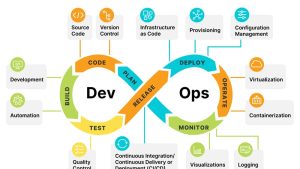Why effective covenant monitoring is essential for credit risk governance

In 2020, the global economy suffered from the effects of the pandemic such as supply-chain disruptions that constrained a number of sectors. Soon after recovering from supply-chain disruptions, Russia’s invasion of Ukraine affected Europe’s economy and elevated global energy prices. Inflation reduced the disposable income of households, and companies are suffering from declines in revenue. Tighter monetary policies are affecting economic activity. Corporate defaults doubled in September 2022, according to Moody’s Analytics, warning of a possible economic crisis in the near future. The OECD also confirmed that economic growth of all major economies (except China) would contract in 2023.
The global financial system is vital to the functioning of the economy, especially during periods of economic uncertainty. Ensuring the stability of financial institutions is essential because both businesses and households rely on the financial system to meet their short-term and long-term capital needs. A robust financial system can withstand sudden economic shocks and provide a stable environment for policymakers to regulate economic drivers and achieve long-term stability.
Given the current economic challenges, it is crucial for policymakers and stakeholders to prioritize the stability of the global financial system. Both banks and non-banking financial institutions face significant uncertainty due to their complex business models, which are further exacerbated by economic instability. Financial institutions provide intermediary services through various products, and while increased exposure to volatile banking products can heighten profitability, it also increases credit risk. The inability to manage these risks, especially in large banks, can disrupt the global financial system and lead to severe socio-economic consequences. For instance, the 2008 global recession, triggered by the subprime mortgage crisis in the US, resulted in widespread unemployment and economic hardship.
Understanding Credit Risk in Financial Institutions
Credit risk is the potential loss that arises when a counterparty fails to meet its financial obligations. This risk is inherent in the operations of financial institutions due to the nature of their transactions, which include lending, trade finance, foreign exchange transactions, hedging, and working capital solutions. These transactions create payment obligations that need to be settled promptly. If these obligations are not met, it results in credit risk for the financial institution. For lenders, credit risk occurs when borrowers fail to repay loans as agreed, impacting the lender’s balance sheet and profitability.
Credit failures can lead to additional risks, including liquidity risks, profitability issues, regulatory pressure, and reputational damage. The failure of large financial institutions can create systemic credit risk due to the interconnectedness of the financial system. For example, the credit defaults in the 2008 mortgage crisis affected the liquidity of American International Group (AIG), a multinational insurance company. Loss of confidence in financial institutions can lead to fund shortages and drive investors towards non-regulated investment vehicles. For example, a survey by the Independent Community Bankers of America found that 70% of US community banks reported growth during the 2008 crisis due to distrust in the US banking system.
Strategies for Credit Risk Mitigation (CRM)
Effective credit risk mitigation strategies are essential for maintaining profitability and preventing insolvency in financial institutions. These strategies include:
- The Five C’s of Credit:
- Character: Assessing the borrower’s reliability and track record.
- Capacity: Evaluating the borrower’s ability to repay the loan based on income and existing debts.
- Capital: Considering the borrower’s financial reserves and assets.
- Collateral: Securing the loan with assets that the lender can claim if the borrower defaults.
- Conditions: Understanding the impact of external conditions on the borrower’s ability to repay the loan.
- Using the Five C’s model helps lenders identify inherent risks in a loan and implement appropriate safeguards, such as debt restructuring or portfolio diversification.
- Collateralizing Loans:
- Securing loans with assets provides a safety net for lenders. If the borrower defaults, the lender has the right to seize and sell the collateralized assets to recover losses. This reduces the lender’s exposure to risk and helps protect the financial institution’s stability.
- Risk-Based Pricing:
- In risk-based pricing, lenders charge interest rates based on the borrower’s risk profile. Higher interest rates are applied to riskier borrowers to compensate for the increased likelihood of default. This approach helps lenders manage their risk exposure while ensuring that higher-risk loans still contribute to profitability.
- Limited Exposure to High-Risk Sectors:
- Diversifying loan portfolios helps financial institutions reduce their dependence on any single sector, minimizing overall risk. By spreading exposure across various industries and sectors, lenders can better withstand economic downturns that may affect specific sectors. For example, Lehman Brothers collapsed due to its heavy concentration in the US housing market.
- Post-Disbursement Monitoring:
- After disbursing a loan, lenders should regularly obtain financial reports and other relevant information from borrowers. This ongoing monitoring helps ensure that borrowers use the funds appropriately and are generating sufficient income to meet their debt obligations. Reporting frequency can vary based on the borrower’s risk profile and the industry in which they operate.
- Contractual Debt Covenants:
- Debt covenants are pre-determined restrictions and requirements placed on borrowers to protect lenders from potential credit risk. These covenants serve as control mechanisms and tools for maintaining the lender-borrower relationship after loan origination. Positive covenants promote borrower stability, while negative covenants restrict activities that could increase the lender’s credit risk.
Effective Covenant Monitoring
Covenants provide early warnings of potential issues with borrowers. Covenant tracking involves:
- Regular Analysis: Reviewing financial ratios and trends in the borrower’s performance to detect any signs of financial distress early.
- Independent Assessments: Using separate teams of credit analysts to ensure unbiased evaluations of borrower performance and covenant compliance.
- Timely Interventions: Taking appropriate action based on covenant breaches to protect the lender’s interests and mitigate potential risks.
Regulatory Background
In the wake of the 2008 financial crisis, regulators have placed greater emphasis on the importance of covenant monitoring. The European Banking Authority’s (EBA) guidelines on Loan Origination and Monitoring stress the need for maintaining robust monitoring frameworks supported by adequate data infrastructure. This ensures that credit risk is managed in line with the lender’s risk appetite, strategy, and policies. Regular credit reviews and adherence to covenants act as early warning tools, helping lenders manage their risk exposure effectively.
Contemporary Issues in Covenant Monitoring
Effective covenant monitoring requires additional cost and effort. In many financial institutions, relationship managers handle covenant monitoring while also managing loan origination, leading to potential oversight. To address this, lenders should establish dedicated teams of credit analysts to manage covenant monitoring and support internal risk reviews. This approach ensures thorough and objective monitoring, reduces credit risk, and allows relationship managers to focus on new business.
While relationship managers are crucial for maintaining client relationships and driving new business, they may be too busy to monitor covenants effectively. By creating a separate team of credit analysts, financial institutions can ensure that covenants are monitored diligently. This team can work closely with relationship managers and risk teams to provide comprehensive oversight of loan performance and covenant compliance.
Conclusion
The stability of the global financial system is critical, especially in times of economic uncertainty. By understanding and mitigating credit risk, financial institutions can maintain profitability and prevent insolvency. Effective credit risk mitigation strategies, including the Five C’s of credit, collateralizing loans, risk-based pricing, portfolio diversification, post-disbursement monitoring, and robust covenant management, are essential. Policymakers and stakeholders must prioritize these strategies to ensure the stability of financial institutions and the broader economy.
By implementing these strategies, financial institutions can better navigate economic challenges and contribute to the overall stability of the financial system. This proactive approach not only protects individual institutions but also helps safeguard the global economy from future crises.





